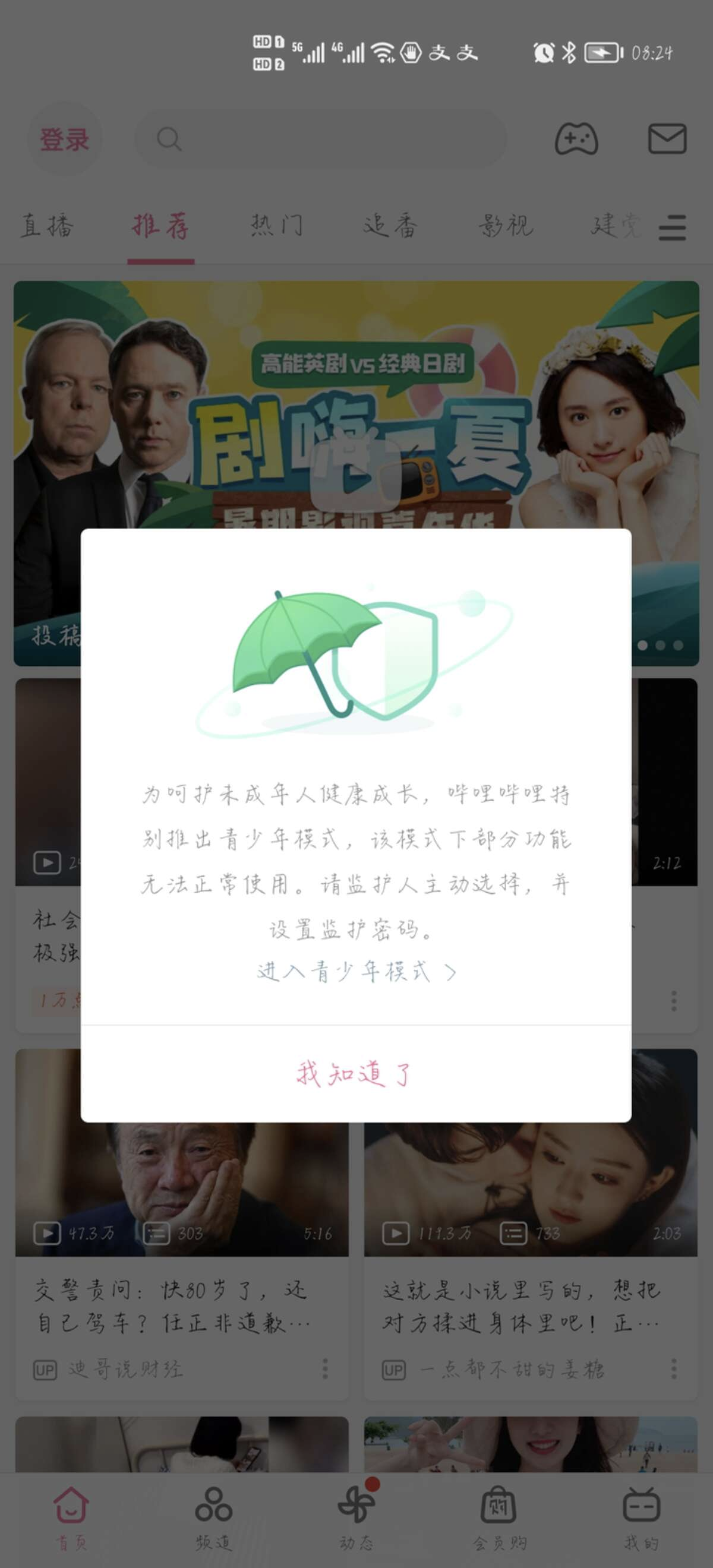在UI自动化测试中弹窗是影响自动化用例稳定性的一大因素,如何方便快捷的处理各种情况下的弹窗,是搞UI自动化测试必须要面临的问题.
弹窗的种类:
安装APP时的系统弹窗
此类弹窗一般有两种,一种是自动化测试框初始化本身也需要安装一些APP,比如uiautomator2会安装atx-agent、com.github.uiautomator,这些弹窗在初始化环境的时候可以手动点掉,case里不需要关注。另一种就是安装我们的被测app,像下面这种
都是我们不得不去处理的,不然,自动化也就是不自动了。
APP启动时的权限弹窗

这类弹窗是APP在启动时会申请一些基础的权限
APP内的业务弹窗
弹窗处理
本文使用的是uiautomator2这个自动化框架,它提供了一种watcher对象,可以用来配置要监控的元素,这里我们配置要监控的就是页面上的弹窗,下面来看看具体怎么做。
watcher的使用
# 常用写法,注册匿名监控
d.watcher.when("安装").click()
# 注册名为ANR的监控,当出现ANR和Force Close时,点击Force Close
d.watcher("ANR").when(xpath="ANR").when("Force Close").click()
# 其他回调例子
d.watcher.when("抢红包").press("back")
d.watcher.when("//*[@text = 'Out of memory']").call(lambda d: d.shell('am force-stop com.im.qq'))
# 回调说明
def click_callback(d: u2.Device):
d.xpath("确定").click() # 在回调中调用不会再次触发watcher
d.xpath("继续").click() # 使用d.xpath检查元素的时候,会触发watcher(目前最多触发5次
# 移除ANR的监控
d.watcher.remove("ANR")
# 移除所有的监控
d.watcher.remove()
# 开始后台监控
d.watcher.start()
d.watcher.start(2.0) # 默认监控间隔2.0s
# 强制运行所有监控
d.watcher.run()
# 停止监控
d.watcher.stop()
# 停止并移除所有的监控,常用于初始化
d.watcher.reset()
上面是watcher的一些常用api以及解释,来源于github。嘻嘻,自己懒的写了。
实战案例
下面我们用B站apk为例,处理从安装到登录后的一系列弹窗。
import uiautomator2 as u2
import os
import time
base_dir = os.path.dirname(__file__)
apk_path = os.path.join(base_dir, 'apks/bilibili.apk')
d = u2.connect_usb(serial='MDX0220924018819')
# 从安装到登录成功后,可能会出现的弹窗,在这里进行注册,这个是华为手机出现的弹窗类型
d.watcher.when('继续安装').click()
d.watcher.when('完成').click()
d.watcher.when('同意并继续').click()
d.watcher.when("我知道了").click()
d.watcher.start()
d.app_install(apk_path)
d.app_start('tv.danmaku.bili')
d(text='我的').click()
time.sleep(3)
if d(resourceId="tv.danmaku.bili:id/btn_change_account").exists:
d(resourceId="tv.danmaku.bili:id/btn_change_account").click()
else:
d(resourceId="tv.danmaku.bili:id/tv_login").click()
time.sleep(3)
d(resourceId="tv.danmaku.bili:id/username").set_text('xxxxxxxxx')
d(resourceId="tv.danmaku.bili:id/userpwd").set_text('xxxxxxxx')
d(resourceId="tv.danmaku.bili:id/log_reg_checkbox").click()
time.sleep(2)
d(resourceId="tv.danmaku.bili:id/btn_login").click()
d(text='首页').click()
弹窗处理的核心思想是,起一个线程,不停的监听页面上有没有弹窗出现,出现了就点击,或点击取消或点击确认等等。
uiautomator2处理弹窗的核心思想
采用了后台运行了一个线程的方法(依赖threading库),然后每隔一段时间dump一次hierarchy,匹配到元素之后执行相应的操作。
class Watcher():
def __init__(self, d: "uiautomator2.Device"):
self._d = d
self._watchers = []
self._watch_stop_event = threading.Event()
self._watch_stopped = threading.Event()
self._watching = False # func start is calling
self._triggering = False
self.logger = setup_logger()
self.logger.setLevel(logging.INFO)
def when(self, xpath=None):
return XPathWatcher(self, xpath)
Watcher对象个self._watchers 属性来维护所有要监控的元素,d.watcher.when('继续安装')当我们调用when方法后会返回一个XPathWatcher对象,然后再调用这个对象的click方法实现对监控元素的操作。
class XPathWatcher():
def __init__(self, parent: Watcher, xpath: str, name: str = ''):
self._name = name
self._parent = parent
self._xpath_list = [xpath] if xpath else []
def when(self, xpath=None):
self._xpath_list.append(xpath)
return self
def call(self, func):
"""
func accept argument, key(d, el)
d=self._d, el=element
"""
self._parent._watchers.append({
"name": self._name,
"xpaths": self._xpath_list,
"callback": func,
})
def click(self):
def _inner_click(selector):
selector.get_last_match().click()
self.call(_inner_click)
click方法就是将点击的操作放到回调函数,然后调用XPathWatcher对象的call方法,这个方法会生成一个监控规则,并将监控规则放到我们前面提到的Watcher对象的self._watchers 属性。
def start(self, interval: float = 2.0):
""" stop watcher """
if self._watching:
self.logger.warning("already started")
return
self._watching = True
th = threading.Thread(name="watcher",
target=self._watch_forever,
args=(interval, ))
th.daemon = True
th.start()
return th
再然后调用Watcher对象的的start方法,开启一个线程,按照指定间隔时间从页面dump信息,查看是否有要监控的元素,找到后调用回调函数。
以上是我们关于弹窗处理的一些操作,但是有没有发现,上面实战哪里写的是有问题,难道每一次有新的弹窗都要在这里写一行代码么,还有是不是能适配不同机型呢?
下片文章会对这里进行一下重构以及如何兼容不同机型,敬请期待。
欢迎大家去 我的博客 瞅瞅,里面有更多关于测试实战的内容哦!!